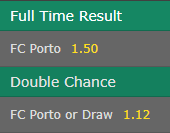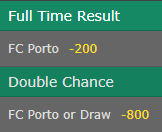How Betting Odds Work - A Outplayed Guide
Justin Legg
29 Jul 2019
Updated: 24 Apr 2023
The act of betting has been around for centuries and a key component of that is the betting odds that are used to work out winnings. That may sound obvious but how many punters really understand betting odds and the different odds systems that are available?
Beginning with the basics and betting odds can be defined as:
- An indication of the probability of an event occurring according to a bookmaker or exchange
This probability can be split down further into high and low odds with:
- High odds being an indication that the event is less likely to occur
- Low odds being an indication that the event is more likely to occur
So the odds are there to indicate a likelihood of something happening, these odds can be displayed in different formats. The ones that we are most likely to come across are fractional, decimal and American odds systems.
Betting Odds Systems
Fractional Odds

Fractional odds are probably the odds format that we are most familiar with, prior to matched betting, and are represented by two numbers split by a forward slash for example:
4/1
Fractional odds show you how much you are going to win related to a stake amount. In the 4/1 example, the first number (4) indicates how much you would win and the second number (1) indicates how much you would need to stake in order to win that amount.
At odds of 4/1 you would win £4 for every £1 you stake.
You may have heard or seen the term evens before when it comes to betting and fractional odds. Evens relates to the fractional odds 1/1 and you may see the term evens instead of 1/1 displayed on certain bookmakers. In real terms when betting at evens for every £1 you bet you will make £1 profit back.
For example, a £10 bet at 1/1 would return £20 in total; your £10 winnings and your original £10 stake.
When you walk down the high street past a bookmaker in the UK, it will be fractional odds that you will see displayed. When it comes to matched betting we don’t really use the fractional odds type but it is still the most likely default setting for UK bookmaker websites. This means that when you first sign up to a bookie it will be fractional odds that are displayed on the first login. You will often have to change the settings on the bookmaker site from fractional to decimal display in order to calculate your matched bets. Platinum members can find out how to access and changes odds display settings through this guide in the training centre.
Decimal Odds

Decimal Odds are the odds that we use all of the time when we are matched betting. Decimal odds are displayed in numeric form for example 5.0 which is the equivalent to 4/1 in fractional. Decimal odds allow you to quickly calculate how much total money will be returned to you if your bet wins.
To work out this total return you just multiply the stake by the decimal number and that is how much money you will receive back from your winning bet.
If the odds are 5.0 and the stake is £1 you would receive £5 back, inclusive of your £1 stake as 5 x 1 = 5.
At first, when you start matched betting, decimal odds may seem a bit confusing due to the fact that we have become so accustomed to fractional odds. Once you get used to them however, they are actually a far more user-friendly odds system, allowing you to quickly work out your returns.
American Odds

These are the type of odds we are probably most unfamiliar with and also the least likely to use. They are pretty confusing but don’t worry if you don’t fully understand them.
American odds work on a positive and negative basis and represent how much a bettor will have to wager to win 100 units of currency.
I’ll use pounds as the currency in the following examples:
If the odds are negative so -120 for example, this means that to win £100 you would need to wager £120. Therefore, if the selection wins, you would receive back £220 consisting of your £100 winnings and your £120 stake. Essentially negative means the selection is favourite or odds on.
For underdogs the odds will be positive, so +220 for example. That means that if you wagered £100 you would receive £220 in winnings plus your £100 stake back if the selection wins.
As mentioned you are unlikely to encounter American odds very often in your betting or matched betting journey, but it is useful to understand the mechanics behind them just in case.
Also read about each way accumulator calculator
Odds Conversion
There are times when betting sites simply do not offer certain odds types. In this situation, you may need a little help deciphering what the odds actually are. If at any point you do need to convert odds, platinum members can use the Outplayed Odds Converter and Probability Calculator to do so. A full video and written guide can be found for this calculator in the training centre here.
Alternatively, the odds can be worked out manually using the following equations:
- To convert decimal odds to fractional, subtract 1.00 and then find the nearest whole integer (so for example 3.75 - 1.00 becomes 2.75/1, or 11/4).
- To convert US odds to decimal, if the US odds are positive, divide by 100 and add 1. If it is negative, divide 100 by the US odds (without the minus sign) and add 1.
- To convert fractional odds to decimal, divide the first figure by the second figure add 1.00 (so 11/4 = 2.75, then add 1.00 = 3.75).
